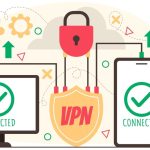The world of cybersecurity is always changing. New threats are constantly emerging, and security teams have to adapt their strategies to stay ahead of the curve, like working to improve PKI program management. As we move into 2023, here are five terms that every security professional should know.
Table of Contents
Phishing
When someone attempts to acquire sensitive information, such as
Phishing is a type of online scam that involves tricking people into revealing sensitive information. The most common form of phishing involves attackers sending emails that appear to be from a legitimate organization. The email will often include a link that takes the user to a fake website that looks identical to the real one.
The user is then prompted to enter their login details or other sensitive information, which the attacker can use to gain access to their account. Phishing attacks can be difficult to spot, but there are some tell-tale signs to look out for, such as poor grammar and spelling and unexpected requests for personal information. If you suspect you may be the target of a phishing attack, do not respond to the email or click on any links. Instead, contact the organization using a known email address or phone number to verify the request.
Malware
Malware is software designed to damage or disable computers and computer systems. Malware is typically spread through email attachments or links from websites. Once malware is installed on a system, it can variousriety of malicious activities, including stealing personal information, deleting files, and disabling systems. Malware can also launch attacks against other computers or networks.
In some cases, malware can allow an attacker to gain control of a system. This type of malware is known as a Trojan horse. If you suspect your computer has been infected with malware, it is essential to run an antivirus scan as soon as possible. Antivirus software can detect and remove most types of malware. However, some types of malware, such as rootkits, are challenging to detect and remove without specialized tools. To protect your computer from malware, it is essential to keep your antivirus software up-to-date and only open email attachments from trusted sources.
Ransomware
Ransomware is a growing threat to businesses and individuals alike. This type of malware blocks access to a computer system until a ransom is paid, typically in the form of cryptocurrency. Once installed, ransomware can encrypt files and prevent users from logging into their accounts. In some cases, it can even render a computer completely unusable. Ransomware attacks are often delivered through phishing emails or infected websites. Once clicked, the malicious payload is executed, and the user’s system is blocked. Hackers then demand a ransom for the decryption key.
While some ransomware attacks can be resolved without paying the ransom, this is not always possible. In many cases, the best course of action is to restore data from backups. However, more than this may be needed to regain access to encrypted files. As ransomware becomes more sophisticated, it becomes increasingly difficult to protect against. Businesses and individuals must remain vigilant to avoid becoming victims of this growing threat.
Spyware
Spyware is a type of software that is installed on a computer without the user’s consent. Its purpose is to collect information about the user’s activities, such as which websites they visit and what they do online. This information can be used for marketing purposes or sold to third parties. Spyware can be installed without the user’s knowledge in various ways, including through peer-to-peer networks, email attachments, and downloads from the internet. Once installed, it is difficult to remove and can severely impact the computer’s performance. Spyware can also pose a security risk by allowing unauthorized access to the user’s personal information. For these reasons, it is essential to be aware of spyware and take steps to protect your computer.
Botnet
Botnets are a serious threat to computer security. They are networks of computers that have been infected with malware and are controlled by a single attacker. Once a botnet is established, the attacker can launch attacks on other computers, spread malware, or steal information. Botnets are often used to send spam or distribute denial-of-service attacks. They can also be used to mine bitcoin or commit other forms of fraud. The most famous botnet was the Mirai botnet, which was used to launch a massive denial-of-service attack on the website of the security journalist Brian Krebs.
Botnets are challenging to detect and eradicate because they often contain thousands of infected computers worldwide. The best defense against botnets is prevention. Users should make sure that their computers are protected with up-to-date antivirus software and that they do not click on links or open attachments from unknown sources.
Final Thoughts
Phishing, malware, ransomware, spyware, and botnets are all dangerous threats to computer users that can result in the loss of data or money. Computer users need to be aware of these threats and take steps to protect themselves from them. The best way to protect yourself from these threats is to keep your software up-to-date, use anti-virus software, improve PKI program management and be cautious about the emails and websites you visi










